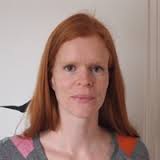| | Functional Materials Inspired by Geckos, Mussels and Sandcastle Worms Nature has developed elegant and economical strategies to produce multi-functional and adaptive materials. Drawing inspiration from a diverse set of natural examples our main aim is to develop new polymeric materials with altered morphologies and mechanical properties. In this talk I will discuss three projects: 1) Geckos
Many animals have evolved adhesive organs on their feet enabling them to strongly attach to and quickly detach from nearly any kind of surface. These organs come in many different shapes, but regardless of the design, non-covalent surface forces are used to achieve adhesion, and research suggests that many animals rely primarily on van der Waals forces. The surface structure, not the chemistry, is therefore dominating the function of natural adhesive systems.
We developed a nanofabrication process based on colloidal self-assembly, which allows the fabrication of elastomers patterned with nanodimples. Compared to smooth interfaces, adhesion of these nanopatterned surfaces is enhanced. 2) Mussels
In this project, we develop binders for waterborne paints with tunable hydrophilicity and controlled crosslinking. The chemistry is based on natural under-water adhesives secreted by mussels. State-of-the-art waterborne paints are based on dispersions of insoluble resins in water. These have the required property that they form a hydrophobic film upon drying, but their rheological properties during application are not satisfying. It is therefore desirable to develop a new class of polymers that can be dissolved in water, but nonetheless forms a cross-linked, hydrophobic film upon drying. 3) Sandcastle worms
Sandcastle worms secrete protein-based adhesive materials as cement to build protective shells. A key element in the adhesion processing of these natural underwater adhesives is polyelectrolyte complex formation, so-called complex coacervation. The resulting fluidic adhesive complexes are water immiscible which allows these complex coacervates to be secreted and positioned underwater, without loss of molecules to the seawater. Analogous to the biological examples, in this project, we synthesize functionalized polyelectrolytes that can form strong and tough complex coacervates.
|

